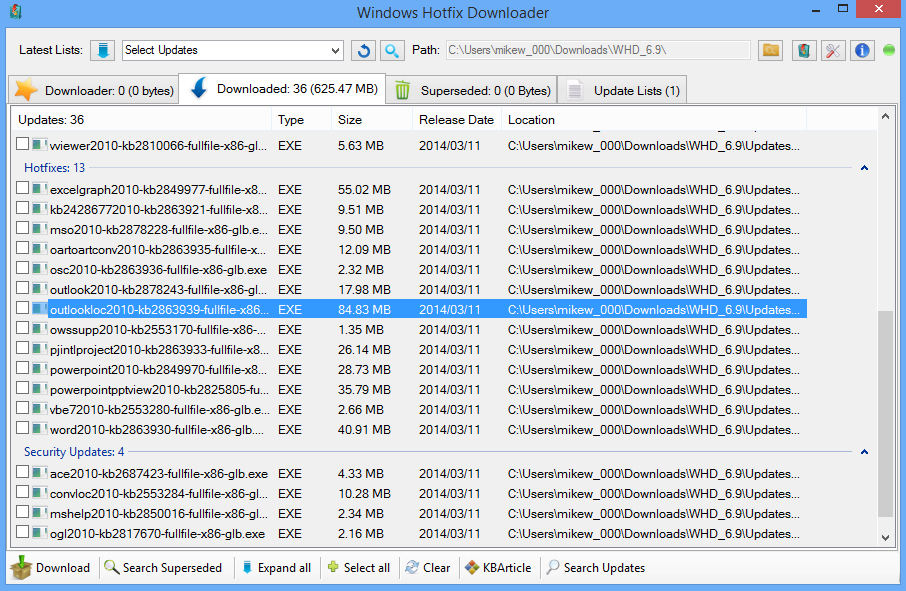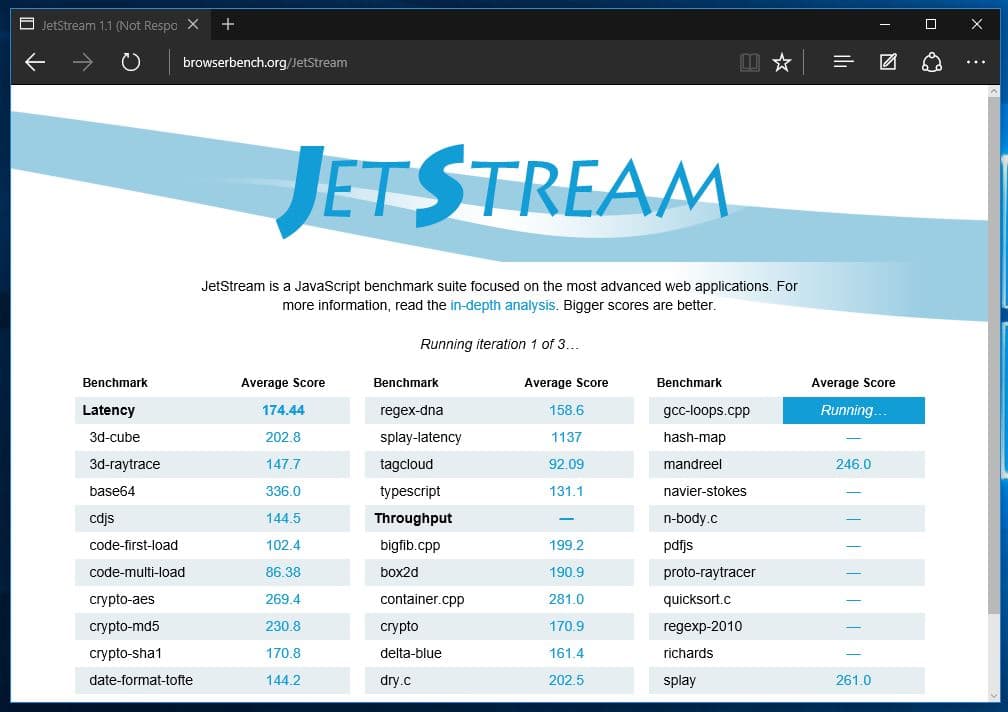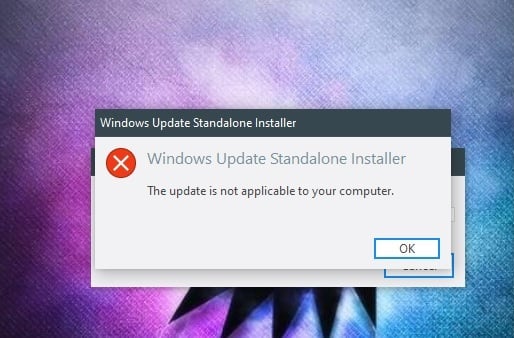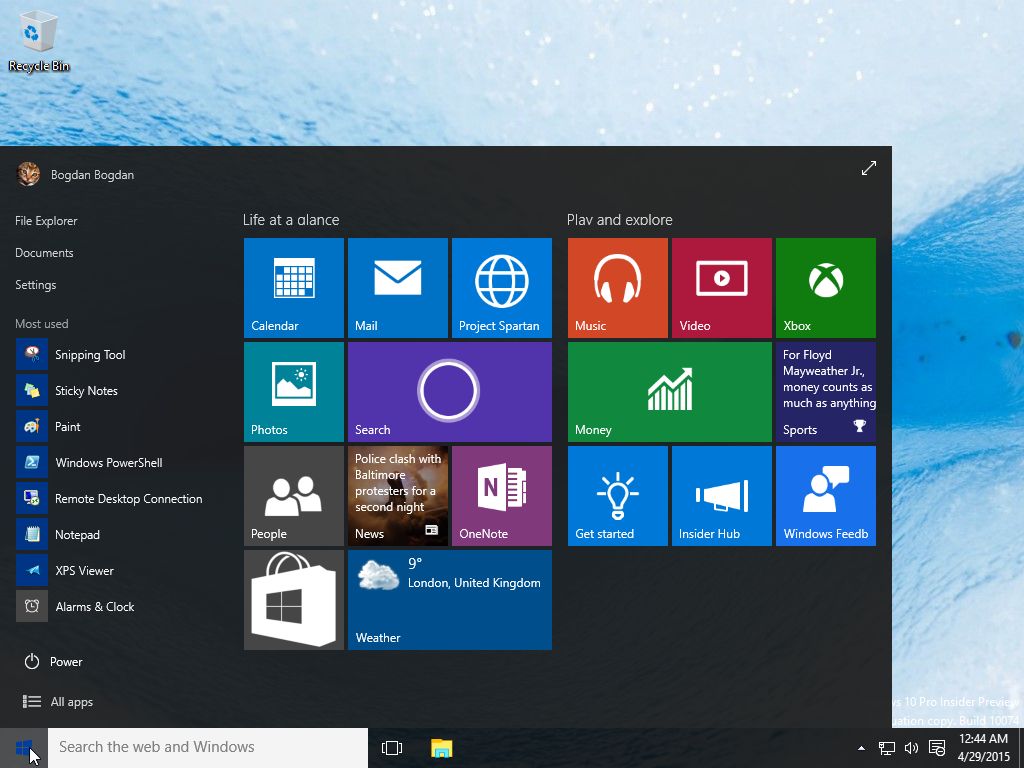Today's release of the May 2020 Update marks the start of the 18-months servicing support lifecycle. If you're curious about Windows Server, version 2004, which was also released today, see the Windows Server Containers blog. Windows 10's privacy settings have more detailed explanations of data that the operating system may collect. Additionally, the "enhanced" level of telemetry collection was removed.
Windows Defender has been replaced by the universal app Windows Defender Security Center. Devices may optionally be configured to prevent use of software from outside of Microsoft Store, or warn before installation of apps from outside of Microsoft Store. "Dynamic Lock" allows a device to automatically lock if it is outside of the proximity of a designated Bluetooth device, such as a smartphone. Windows 10 offline update is absolutely an ideal method for Windows users to get new systems without network or the weak Internet. Obviously, Microsoft has released quite a lot of versions of Windows 10 cumulative updates for Windows users. And it might be really annoying when they have limited bandwidth based Internet connections to install Windows 10.
And sometimes, it really causes quite a long time for us to wait for Windows 10 online update. For any Windows 10 PC—be it in an office, a home, a school, or a government institution—there are endless Windows Updates to install. Microsoft has gone to great lengths to make this process unobtrusive. In fact, for most home users with steady internet connections, Windows Updates are installed automatically with little to no input from the user. In an ideal world, this is how updates would go for everyone.
But as evidenced by the breadth and popularity of our Windows update troubleshooting article on the Windows 10 Help Forums, it's clear that we don't live in an ideal world. For reasons technological and logistical, you may not be able to get on board with set-it-and-forget-it automatic Windows Updates. Microsoft has made welcome update service improvements that make installing Windows Updates require fewer resources and installation faster.
Still, there are times when you might need to install updates manually. Microsoft releases a new cumulative update for Windows 10 version 2004 and newer. The new update is available via Windows Update as an optional update and brings several improvements. If you are likely to install this update on multiple devices, Microsoft also releases an offline installer for you. Microsoft is rolling out June 2020 cumulative update to devices running the Windows 10 May 2020 Update . As is the case with all Patch Tuesday releases, it doesn't contain any new features and it will download automatically on your device to fix and correct issues present in the original build.
If you are against of installing Windows updates automatically and disable Windows Update service completely, then you have to download and install the latest security updates manually once a month. You can also think about manually installing Windows updates in segments of the network isolated from the Internet when testing updates on computers and in some other cases. In this article we'll show you how to manually find, download and install a latest cumulative security update for your Windows 10 build.
The tenth stable build of Windows 10, version 2004, codenamed "20H1", was released to the public on May 27, 2020 after being on the Insider Release Preview branch since April 16, 2020. Cumulative – includes a collection of previously released updates; instead of downloading each relevant update separately, they are bundled together in a single package. If you have updates included in the cumulative update installed already, they are not installed.
In addition, Microsoft sometimes includes new versions of existing updates, e.g., a version 2 to fix for something that might not have been resolved in the initial release. Microsoft suggests closing all apps that you don't need and making sure to save any important changes before you finish installing the update. The Redmond-based tech giant also advises PC users to keep their devices plugged in throughout the duration of the installation -- your laptop losing power mid-download could cause issues.
The May 2021 update began rolling out on May 18 to select devices, starting with those running Windows 10 version 2004 or later. Not all devices will be offered the update right away, so try to be patient until it reaches yours. The eleventh stable build of Windows 10, version 20H2, was released to the public on October 20, 2020 after being on the Beta Channel since June 16, 2020. This is the first version of Windows 10 to include the new Chromium-based Edge browser by default. Based on affirmative preview feedback, today we are pleased to announce that we are starting to make the May 2020 Update available.
In this blog, we will cover how you can get the update and choose when to install, and availability for commercial organizations to begin targeted deployments. Windows 10 October 2020 update, i.e., Windows 10 version 20H2 update, is the newest feature update to Windows 10, available for public starting 20th October 2020. This article discusses how to Install Windows 10 20H2 offline or manually.
How can you decide, which of these updates you need to download and install? Of course, you can download and install all of them, but you can also save your time. Since Microsoft started using cumulative updates, just download and install the latest cumulative update for your OS version.
I always use the release of a new feature update to be the sign that I need to ensure that all of my main computers are on the prior release. I prefer to stay one release behind, as it typically provides me with a stable system with full Microsoft support, and I'm able to identify what issues I may face. So I'm using this time to ensure I have a copy of Windows 10 21H1, which was released in May, saved on a flash drive or on a storage location on a hard drive.
A new feature on Pro, Education, and Enterprise known as Windows Sandbox allows users to run applications within a secured Hyper-V environment. On October 6, 2018, the build was pulled by Microsoft following isolated reports of the update process deleting files from user directories. It was re-released to Windows Insider channel on October 9, with Microsoft citing a bug in OneDrive's Known Folder Redirection function as the culprit. The Anniversary Update also supports Windows Subsystem for Linux, a new component that provides an environment for running Linux-compatible binary software in an Ubuntu-based user mode environment. So, that's a look at getting your updates to install manually.
If you do experience problems with Windows Update, remember to check out our list of tips for troubleshooting the service. If you are installing updates from the Windows Store, check our guide for resolving app installation problems you might experience. Currently it's only available to advanced users who manually check for updates using Windows Update or download the feature update using official Microsoft tools mentioned below. EaseUS includes all the features I expect from backup software like versioning, incremental backups, and scheduling. For more advanced users, EaseUS allows you to install a pre-boot environment onto your hard drive so you can use it to restore files without burning a CD or putting it on an external USB drive.
If windows updates are not working then this repair may help. This will reset windows updates and get all the windows update files registered. These utilities are part of Windows Repair and no longer updated. MajorGeeks recommends you download the complete Tweaking.Com Windows Repair instead. Tweaking.com - Repair Windows Updates - If windows updates are not working then this repair may help. Since version 21H2 is based on version 2004, the Update Assistant is only recommended for devices running an older version like Windows 10 version 1909.
If you use the tool on a computer running version 2004, 20H2, or 21H1, the process will do a complete reinstallation, which is unnecessary, and you end up with more upgrade issues. Based on the prior feature release processes, for example, I know that at the office I will need to deal with repairing PDF printers that will be impacted by the feature update. I use various software products from Intuit, and I have to use the PDF repair tool to fix up my QuickBooks after the feature update process. I also check that backup software and other applications that I have installed on my standalone computers and workstations are happy after the feature update.
My advice is to hold off installing either release for the time being. Many of us Windows admins consider it unwise to install either a new feature release or a new version for several months after it's been released. Time after time we've seen the first few updates after each major release full of fixes for bugs and issues triggered by the new release. To install the patch, head to Update & Security in the Settings app and check for updates. Or you can also download the offline installers from the above link and update your PC manually. Some users fixed this by installing the recent cumulative updates and others rolled back to older versions.
With today's security update, Microsoft has finally fixed a bug that caused frame rate problems for PC gamers. The problems came from security updates released in March, with several users reporting that they were seeing stuttering and frame rates lower than expected. As of July 12, Microsoft hasn't officially acknowledged the taskbar problems, but if you have these issues, installing today's cumulative update should help. As you're probably aware, Windows 10's latest monthly security updates have an issue with the taskbar. Microsoft says it has also improved security of external input devices such as a mouse, keyboard or stylus. The cumulative update also includes security fixes for both Xbox app and the Microsoft Store .
With Windows 10 Upgrade Assistant you can Upgrade your Windows PC to the latest Windows 10 version for FREE! The Windows 10 Update Assistant will be deployed to Windows 10 PCs that have not yet had the latest update installed. Microsoft maintains a web page called Update History, which lists all the cumulative updates and their contents for each Windows 10 and Windows Server release.
The Update History web page also provides links to the Microsoft Update Catalog, where you can download a particular update. By default you can do the update the update from the settings option or you need to download the media creation tool to make the ISO image and then install from this free image file. I have a rMBP15 with up-to-date OSX installed on its internal SSD, and i also have a usb3.0 ssd where i have a Windows 10 Pro installed as a secondary system. Whenever i need a Win based software i boot from that USB drive. Lately i've been receiving notifications from windows update that "Feature update to Windows 10" failed to update and the reason is "Windows 10 couldn't be installed.
You can't install Windows on a USB flash drive using Setup". Obviously USB flash drive is the only destination for the updates since the system "lives" there. Microsoft will begin the global automatic rollout of Windows 10 November 2021 Update via Windows Update to all existing Windows 10 PCs soon. The roll out will begin in phases, starting with newer machines first. The first phase will download the update on newer devices which were tested by Microsoft with their OEM hardware partners.
After that Microsoft will start expanding the update release to remaining devices. According to Microsoft the complete process of Windows 10 November 2021 Update roll out may take several months. Microsoft's out-of-band update may not completely fix the PrinterNightmare vulnerability. Select ISO file to download the update and store it on the device, or pick a connected USB Flash drive with at least 8 Gigabytes of storage space to create installation media right away. Select "update now" on the first screen to start the process.
The Windows 10 Update Assistant checks hardware parameters, e.g. storage, to make sure the upgrade can be downloaded and installed, before the download is started automatically. Some devices that have these versions installed may not see the update being offered via Windows Update; this can be caused by known issues affecting the device or other factors. The fact that the update is not offered via Windows Update does not mean that it cannot be applied using other methods, as you will see in the following paragraphs. However, laptops or desktops computers still using an older release of Windows 10 will also get the new version as an upgrade.
However, the May 2020 Update will install first before installing version 21H2. If the device has a release of Windows nearing the end of service, it will be upgraded automatically. The automatic update usually happens weeks or months after the official release of the new version.
The Go Back feature, which allows you to reinstall a previous version of Windows, is available for 10 days after upgrading to Windows 10 . The Windows installation files occupy a large amount of hard drive storage space during that time. The files are deleted automatically after 10 days. However, you can delete them manually if you want to free up storage space before then. The seventh stable build of Windows 10 is called version 1809, known as the October 2018 Update.
Highlighted features on this build include updates to the clipboard function , SwiftKey virtual keyboard, Snip & Sketch, and File Explorer supporting the dark color scheme mode. The fourth stable build of Windows 10 is called version 1703, known as the Creators Update. This update primarily focuses on content creation, productivity, and gaming features—with a particular focus on virtual and augmented reality and on aiding the generation of three-dimensional content. The third stable build of Windows 10 is called version 1607, known as the Anniversary Update. This version was released on August 2, 2016, a little over one year after the first stable release of Windows 10. The Anniversary Update was originally thought to have been set aside for two feature updates.
While both were originally to be released in 2016, the second was moved into 2017 so that it would be released in concert with that year's wave of Microsoft first-party devices. Windows 10 is a series of operating systems developed by Microsoft. As always, we recommend users to make the upgrade when the company makes it available for your device. However, if you are a pro user, you can always choose to clean install through the ISO files. Also, you can download the latest Windows 10 ISO file from the Microsoft server from here.
If you face any difficulty while installing these updates check how to fixWindows 10 Update installation problems. As usual, Patch Tuesday brings both security and non-security improvements, so users will be recommended to install them as soon as possible. Additionally, Microsoft will also ship security updates for Windows 8.1 and 7, and vulnerabilities would be resolved in other products too, including Microsoft Office. As always, please continue to tell us about your experience by providing comments or suggestions via Feedback Hub. To use the first option, which automatically upgrades your system, select Upgrade this PC now.
The process is automatic, and Windows should automatically upgrade your system. After some time and few restarts, the device would have Windows 10 20H2 update. Being an optional update, you can delay the update so that you don't have to worry about any bugs and issues with the update itself. Like always, you can download and install the update from the Settings app. Just go to the "Windows Update" page and click the "Check for updates" buttons.
The Microsoft Update Catalog page will present two options, a 32 and 64-bit version of the cumulative update. Choose the one that matches your Windows 10 architecture. In my case, I am running Windows 10 Pro 64 bit, so that I will download that.























